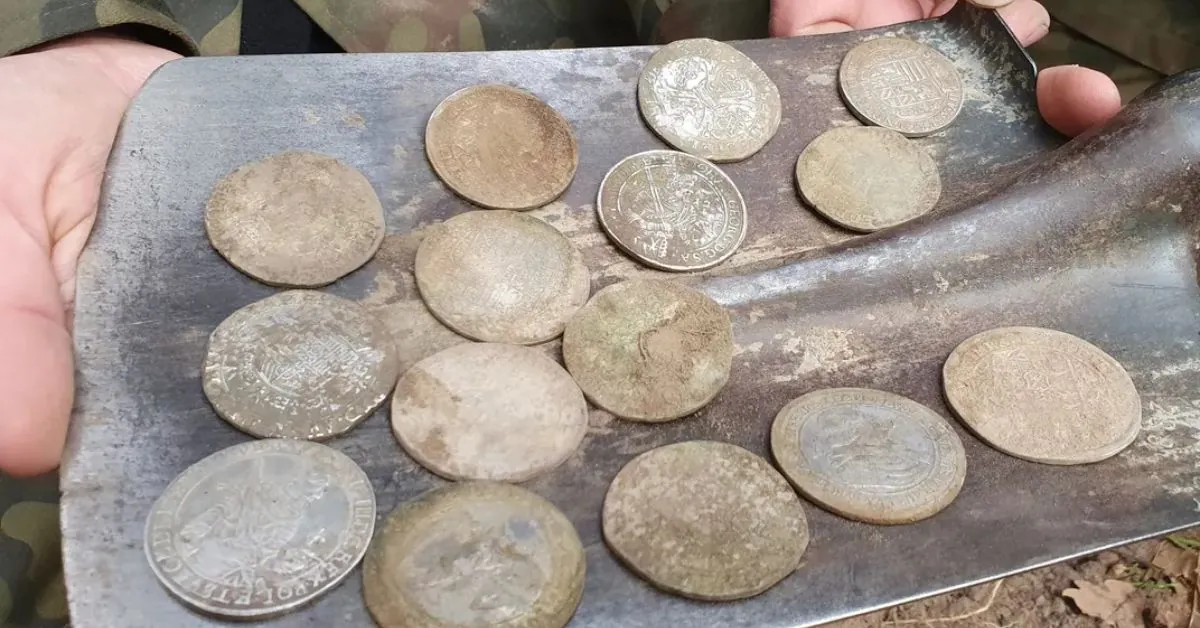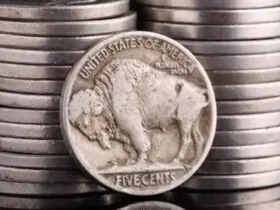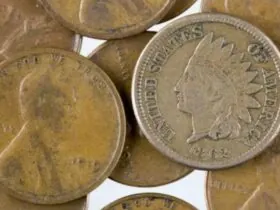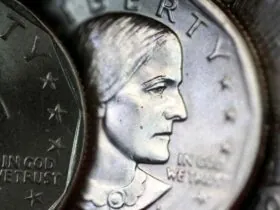In a remarkable turn of events, a father-and-son duo, Sławomir and Szymon Milewski, recently stumbled upon a treasure trove of historic coins while metal detecting in a forest near Pomiechówek, a village located north of Warsaw, Poland. This discovery has captivated archaeologists and treasure hunters alike, with the rare coins estimated to be worth over $120,000. The find offers a glimpse into Poland’s rich history, shedding light on the region’s 16th and 17th-century coinage.
The Search for Ancient Relics
This Article Includes
The treasure hunt began with a group of metal detectorists from the Triglav Historical and Research Association and the Polish “Husaria” Treasure Hunters Association. Their mission was to uncover remnants of an ancient Roman road in the area. Although they did not find the road they were searching for, their efforts were far from fruitless. While combing the area, Sławomir and Szymon Milewski unearthed an astonishing collection of silver coins, sparking immediate excitement.
A Rare Find: Thalers and Patagons
The hoard consisted of 17 rare silver coins, mostly dating from the 16th and 17th centuries. These included thalers and patagons, which were significant currency in Europe during this period. Thalers, large silver coins used across the continent, were widely circulated throughout Europe and later became the basis for modern currencies, including the U.S. dollar. The patagon, another form of silver coin, was minted in the Spanish Netherlands (present-day Belgium, Luxembourg, and the Netherlands) and was used in international trade.
Piotr Duda, an archaeologist with the Triglav Historical and Research Association, described the discovery as one of the largest of its kind in Poland, particularly for the region of Mazovia. He emphasized that coins from this era, especially ones in such good condition, were rare in recent discoveries. The value of the hoard was estimated to be around half a million Polish zlotys ($122,000), a significant sum that adds to the historical importance of the find.
Historical Significance of the Coins
Among the remarkable coins in the collection, one of the most notable is a thaler minted in 1630. This coin features the image of Sigismund III Vasa, the king of Poland from 1587 to 1632, and Sweden from 1592 to 1599. Its well-preserved condition and historical significance make it a highly valuable piece. In fact, a similar coin in poorer condition was sold at auction for over 86,000 Polish zlotys ($21,000) in recent years.
Another standout coin is a 1623 thaler, which was minted for only two years, making it an exceptionally rare find. Many of the coins were created during the period of the Thirty Years’ War (1618-1648), one of the most devastating conflicts in European history, characterized by widespread destruction, disease, and famine.
The Mystery Behind the Hoard’s Burial
The circumstances surrounding the burial of the coins remain unclear. One theory suggests that they may have been buried by a soldier who lost his pay during a turbulent time in history. Another possibility is that a merchant, hoping to protect his wealth from robbers, concealed the coins before visiting a nearby inn. Given that the inn existed about a kilometer away during the 16th century, this scenario seems plausible, and similar discoveries in the region suggest that hiding valuables was a common practice.
The Coins’ Journey to Preservation
After their discovery, the coin hoard was handed over to the Mazovian Voivodeship Conservator of Monuments. The hoard will eventually be preserved and displayed in a local museum, allowing the public to view these rare and valuable artifacts up close. The Milewski family’s remarkable find has not only enriched Poland’s historical record but has also sparked interest in the practice of metal detecting as a way to uncover the hidden treasures of the past.
Conclusion
The discovery of 17 rare silver coins in a Polish forest is a thrilling reminder of the hidden treasures that lie beneath the surface of our everyday surroundings. While the search for an ancient Roman road may have failed, the father-and-son duo’s perseverance has brought to light a priceless collection of coins that provide valuable insight into Poland’s history during the 16th and 17th centuries. This extraordinary find, with its rich historical context and estimated value of $120,000, will continue to captivate treasure hunters, historians, and the public for years to come.







Leave a Reply